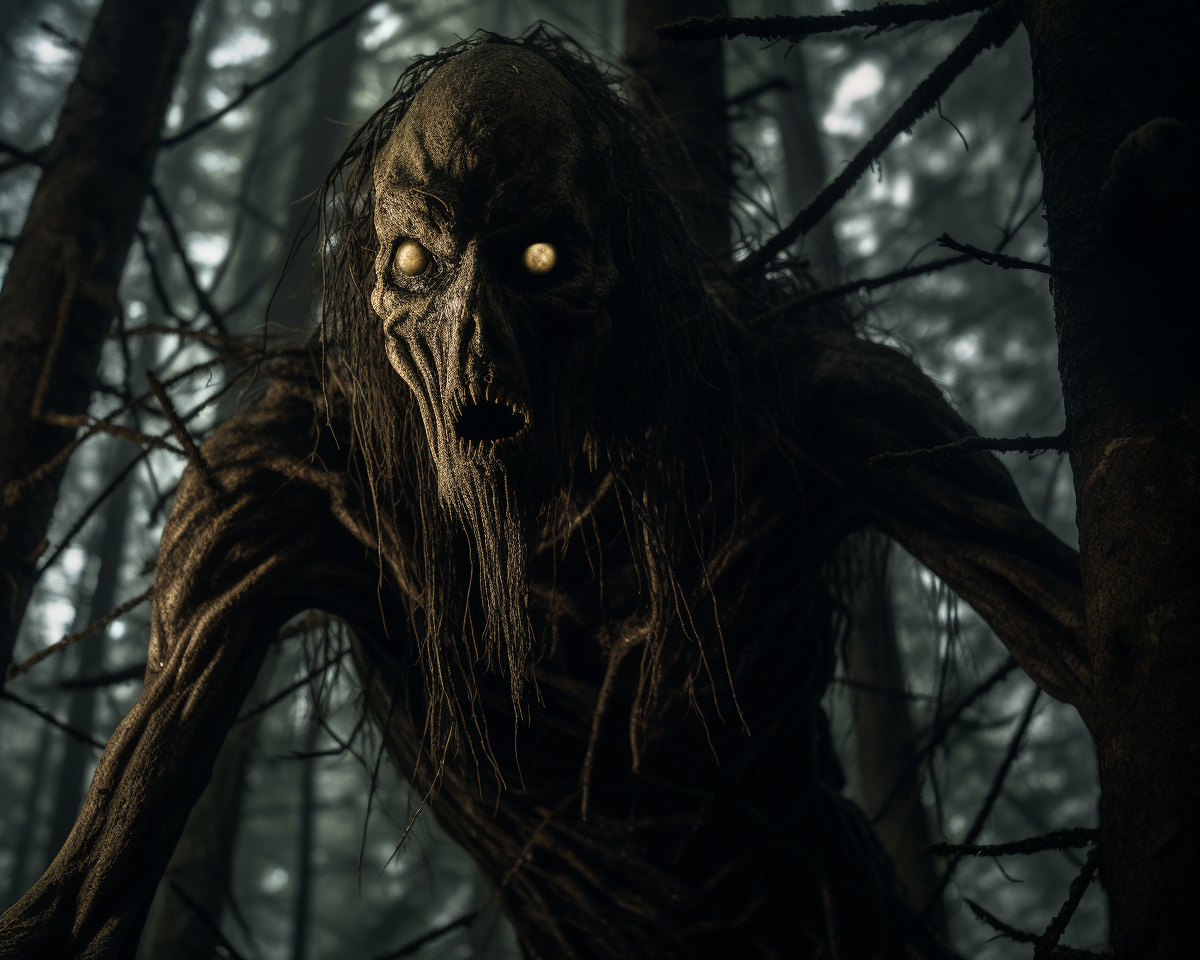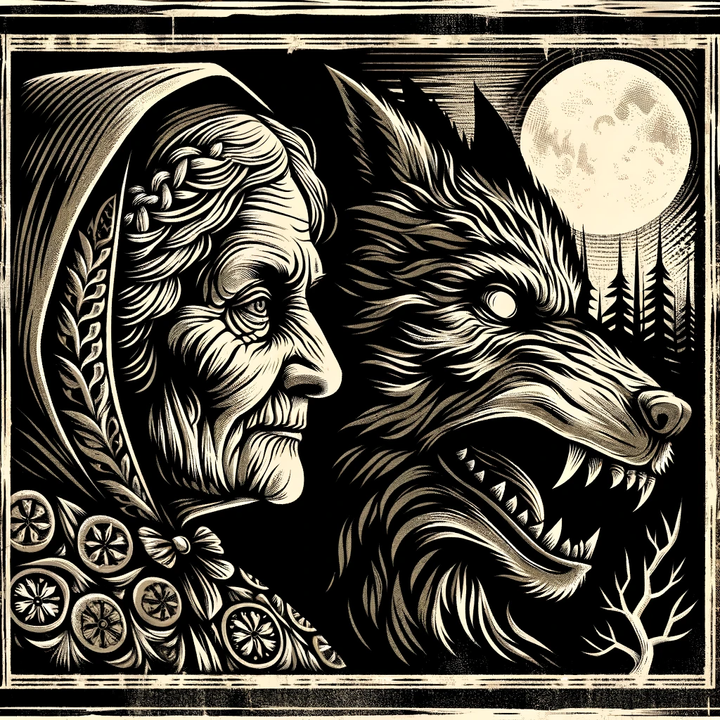The mysterious legend of Drekavac: A trace in Tometino Polje

In the picturesque landscapes of Serbia, especially in the winter idyll of Divcibare, hides a small village called Tometino Polje. Known for its ski resorts, Divcibare attracts numerous tourists in winter. But away from the groomed slopes and the everyday hustle and bustle, a world full of mystical tales and ancient legends opens up, making the heart of every adventurer beat faster. Normally, I specialize in exploring the old stories and ghostly legends of the region, but the tale I want to share today is unusually very present and shrouded in a cloak of mystery.
My visit to Tometino Polje was originally intended to work on translations of old Serbian fairy tales. But fate had other plans, and so I had the pleasure of meeting some locals who grew up in this area. Through them, I was made aware of the story of Drekavac. The name Drekavac may be a foreign word to many, but in local tales it is often referred to as the Balkan Chupacabra. My curiosity was piqued, but what I was to learn next exceeded all my expectations. The legend of Drekavac is not only a fascinating part of local folklore, but also a tale that continues to captivate residents and visitors of Tometino Polje to this day.
The sheep killings in Tometino Polje from 2003
The mystical aura of Tometino Polje, serves as a backdrop for a mysterious and disturbing story that occurred in 2003. The local legend of Drekavac, the Balkan Chupacabra, became an oppressive reality for many residents at that time.

That year, the village was hit by a frightening series of sheep killings. Within two years, more than 200 sheep fell victim to a mysterious predator. Residents speculated about the identity of the predator - was it wolves, jackals, stray dogs, or even the dreaded drekavac? The incident, which was reported, brought an atmosphere of fear and uncertainty over the village. Particularly disturbing was the fact that the sheep were found not only killed, but with their throats cut, and their blood drained.
A particularly frightening incident occurred one autumn evening when little Aleksandar Varagić, the great-great-grandson of Milenko Varagić, witnessed the horror. After discovering the remains of dead sheep on a hill above his house, his family alerted the village community. Together they found 11 killed or severely injured sheep, which, however, died after a few days despite intensive care. The events left deep scars on the community.
While the villagers were trying to identify the culprit and speculations were circulating about the possible existence of the Drekavac, they experienced another disaster. One night, an unknown force devastated 23 acres of fields of wheat and corn, with tracks pointing to wild boar. This continuing series of inexplicable events left the community in a state of despair and fear.
The story of Drekavac, the Balkan Chupacabra, remains to this day a disturbing and unsolved mystery in the Tometino Polje area. Despite the remarkable number of sheep killings, in which the animals had bites on their throats but were not eaten, the true identity of the perpetrator has never been established.
The villagers of Tometino Polje are still on the trail of the mysterious culprit attacking their flocks of sheep. With the hope of scientific clarification, they have sent samples of the killed animals to Belgrade for examination, but so far no clarification of the attacker's identity has been provided to them.
The mythology of Drekavac
Drekavac is a mythical creature from the mythology of the southern Slavs, especially the Serbs. The belief in the existence of this being is widespread among the inhabitants of Serbia, Bosnia and Herzegovina, Croatia, Montenegro and Northern Macedonia. The name "Drekavac" comes from the verb "drekati", which means to scream or shriek.
In mythology and folk traditions, there are various descriptions of drekavac, which vary depending on the region:
In one tradition, drekavac is described as a vampire-like creature depicted as the material manifestation of the soul of a deceased person (in some stories, a young man) who cannot find peace after death. It leaves its grave at night and haunts those who wronged it in life. It is also believed that the souls of drowned, hanged or people who committed suicide can become Drekavacs, as well as people who were not buried according to the rules of tradition.
In other traditions, drekavac is depicted as the material manifestation of the soul of a deceased, unbaptized child who cannot find peace after death and leaves his grave at night to visit his parents' house.
Drekavac is also described as a demonic being covered with long fur on which it constantly treads, which is why it screams. This creature has the ability to change its shape.
In different regions Drekavac is depicted differently - as a dog-like creature walking on two legs, as the souls of fallen soldiers wandering from cemetery to cemetery at night because of sins committed, as a vampirized creature coming out of its grave at night, glowing in the dark and dragging a white cloak behind it, and so on.
The appearance of the Drekavac is considered an omen of bad events. His cry alone, or when his shadow falls on a person, is seen as an omen of death, the outbreak of wars, fires, or the outbreak of deadly and contagious diseases.
Drekavac is also said to attack people who are near cemeteries or forests late at night by jumping on their backs, forcing them to carry it on their backs, and making them wander all over the place all night until the first roosters crow. If the victim does not comply, Drekavac scratches and plucks it with its sharp claws.
Chronology of the uncanny: Accounts of Drekavac
The chronology of events, as presented on the Serbian Wikipedia page, shows an ongoing series of mysterious incidents since the 1990s that indicate the presence of Drekavac in various parts of Serbia. Some of these notable incidents include:
- In 1992, the remains of an unknown creature resembling the description of Drekavac were found near Kruševac.
- In the late 1990s, Drekavac was reported attacking and frightening people on the shores of Silver Lake near Veliko Gradište.
- In 2008, an unknown creature slaughtered over 60 sheep and goats and more than 100 chickens and other poultry in two months near Sremska Mitrovica.
- In 2009, small, noisy creatures were reported near Lazarevac with a long, cat-like body, a long tail similar to a squirrel, and a face similar to a panda bear.
- In 2010, residents of Poljanica near Vranje killed an unknown creature that some believed to be Drekavac after it attacked and killed livestock.
- In 2011, frightening screams were heard at night in Svojnov near Paraćin, which some residents attributed to Drekavac, and some claimed to have seen an unknown large bird creature.
- In the following years until 2018, there were further reports of terrifying screams, unknown creatures, and attacks on people and animals in different parts of Serbia, all with similar descriptions consistent with Drekavac folklore.
The repeated and unsolved incidents over the years have kept the legend of Drekavac alive in Serbian folklore, and the unsolved mysteries surrounding this creature are a fascinating and disturbing part of local lore.
My personal experience
During my investigations in the idyllic village of Tometino Polje, I experienced something eerie on the first night. As darkness fell, I heard strange, disturbing cries coming from the adjacent forest. Although I don't consider myself superstitious by any means, the sounds were disturbing enough to make me want to spend the night with lights and music on. The cries sounded deep, and at first I thought they were coming from a donkey or similar animal. But when I told my hosts about it the next morning, they informed me that there were no donkeys in the area. Had I actually heard the infamous drekavac the previous night, or was it some other animal? That remains an open question.
What is particularly noteworthy are the continuous reports of the mysterious creature that continue to appear to this day, not only in Tometino Polje, but also in various places in the Balkans. The repeated and unexplained incidents have created a lingering sense of uncertainty and concern in the community. The legend of Drekavac seems to remain alive in the picturesque but mysterious landscape of Serbia, and the search for answers continues.




